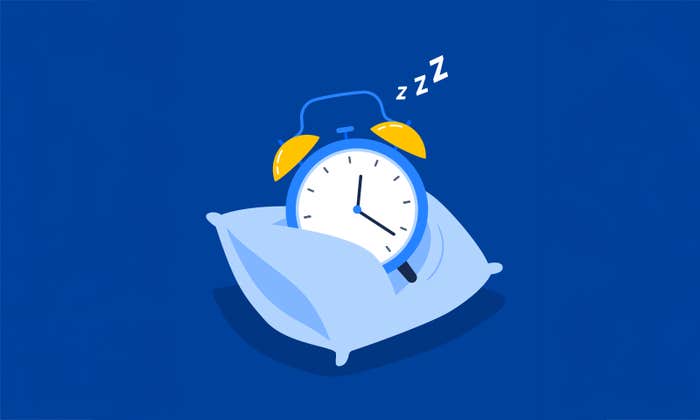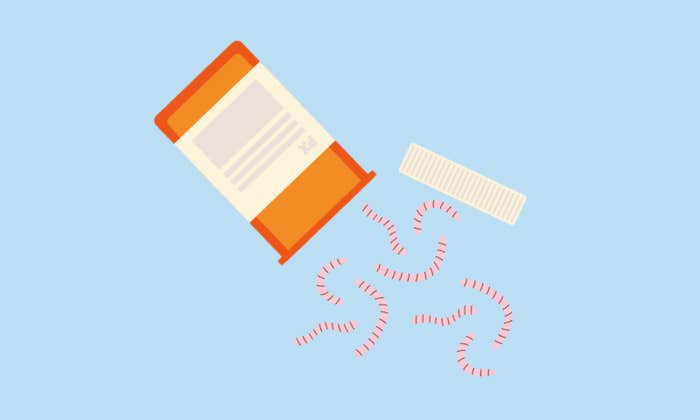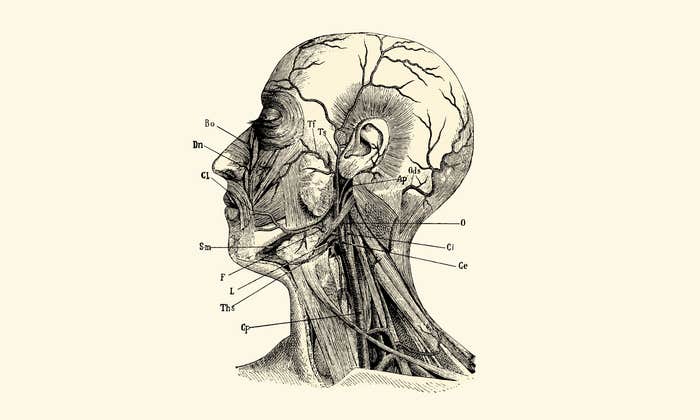Let’s start all over again about face masks. The noise about them is a Judas Priest blare. Can we turn down the volume for a moment? OK, good, thanks. Now, let’s talk about their value. Why there is such discord about them. After all, what has the clamor wrought? Nothing good, says Monica Gandhi, a professor of medicine at the University of California, San Francisco, and associate division chief of the Division of HIV, Infectious Diseases, and Global Medicine.
Gandhi has experienced the racket firsthand. In June she published a study, “Masks Do More Than Protect Others During COVID-19,” which discusses “for one of the first times the hypothesis that universal masking reduces the ‘inoculum’ or dose of the virus for the mask-wearer, leading to more mild and asymptomatic infection” rates. When the study was publicized, Gandhi’s Twitter account was stoned with hate. “I got so many anti-masker comments,” she says. “They were really harsh. They went on about oxygenation and smothering and how there’s no evidence for masking. They were profoundly disturbing. So I signed out and have no intention of going back to Twitter.”
Gandhi says this in the most bitter-free tones you can imagine. She has researched HIV and been a clinician on the AIDS ward at San Francisco General Hospital for years. She knows a thing or two about a deadly virus, how it gets tangled up in politics, and how it tears people’s lives apart. She has earned her authority and calm demeanor, which I could tell the moment we started our interview. Most of all, Gandhi says, she wants to rise above the fray and inform. I began with the most basic question I could think of.

Why should people wear a mask?
Because people can feel perfectly healthy and still be shedding the virus at high rates from their nose and mouth. You can spew them out when you’re talking or coughing or singing or walking around and talking.
What’s wrong with not wearing a mask?
What’s wrong is you could be infected and giving it to others. If you’re far away from others, the virus can’t get to you. Wear something comfortable that covers your mouth and nose and that will decrease you giving the virus to others. What hasn’t been messaged enough is that a mask also protects you. We have plenty of evidence from other respiratory viruses that masks protect you from allowing the virus in and infecting you.
“Wear a F’ing mask” is not a good way to message. With HIV and AIDS, we found the way to control the spread was messaging with love and kindness.
Does a mask simply block virus particles?
It does. A mask is composed of fibers that interlock and keep out viral particles. The virus comes connected with bits of spit and other things and it can’t get through the fibers. It’s a physical blocking. Oxygen is a tiny molecule that can get through, but the virus has more diameter and is blocked. From studies, it looks like N95 masks filter out 90 to 95 percent of viral particles, and cloth masks and surgical masks filter out 80 to 85 percent.
What’s the easiest way to catch the virus?
By getting exposed to someone else’s mouth and nose secretions. It’s not through surfaces. There was a lot of fear at the beginning of the pandemic about fomite transmission. We now know the root of the spread is not from touching surfaces and touching your eye. It’s from being close to someone spewing virus from their nose and mouth, without in most cases knowing they are doing so.
Those of us who live in a city are not sure about how paranoid to be. Can you contact the virus when you walk by somebody who is not wearing a mask?
What constitutes contact is being within six feet of someone for 15 minutes. The CDC hasn’t commented on whether that changes with a mask or not, but it should because being close to someone with a mask will reduce the chance of contact. It’s a great reminder to say the definition of a close contact is 15 minutes within six feet of someone.
So if I’m walking by somebody in the street who’s yapping without a mask, I don’t need to worry?
Right. Just walk right by them, don’t worry, and don’t hang around them.
Can being around somebody for over 15 minutes be potentially lethal?
Yes. With household contacts who are around each other a lot, and one is infected, it’s likely for the other person to get infected and get a worse case of the disease. We saw that at the beginning of the pandemic in New York in built environments with a lot of overcrowding. We’ve seen that in our Latinx populations here in San Francisco and in other cities where people are in crowded situations. So, yes, the longer duration of exposure, the more likely you are to be infected, for sure.
Even with people wearing masks?
No. Masks absolutely block transmission. I want to give people hope. I know this has been a hard time but you can mask and still be around other human beings. At the beginning, it was, “Don’t ever see anyone.” That’s a terrible message. We’ve seen rates of mental illness, depression, loneliness increase in this country. There is a way to be safe, which is to block your mouth and nose. Then, yes, you can be around one another.
We now know the root of the spread is not from touching surfaces and touching your eye. It’s from being close to someone.
I’ve read viral particles can stay airborne and travel beyond six feet. How long can they stay airborne? Could they hang in the air and form a little cloud into which you could walk and become infected?
Most infectious disease researchers and epidemiologists believe this behaves like a droplet-spread infection. We define this by its “transmissibility potential”—how many people one person infects—as opposed to what you can visualize in the air. But we’re in the technological age. We can visualize things in the air; we can culture organisms from surfaces; we can culture sewage and water. The ability to do all of these things does not mean that COVID-19 is spread through all of these settings. It’s been many months into the pandemic and we’ve gathered epidemiologic data that shows high-risk and low-risk activities. The bottom line is that in places where masking is consistent, we have not seen major outbreaks of severe infection. Places where we can’t mask consistently, like when dining, are more associated with symptomatic disease. So, no, although the virus can be aerosolized, I’m not worried transient contact with “contaminated air” will spread it.
Have you flown on a plane lately?
I have. Three times during the pandemic. I feel safe because I’m good about masking and so are the flight attendants and passengers. I’ve seen flight attendants walk down the aisle and say, “Pull up that mask, sir,” or wake someone up and say, “Your mask is off your nose, put that up.” Someone told me 700,000 people flew in this country two days ago. Believe me, we would be seeing super-spreading events if flying wasn’t safe. But in close-contact settings, where people are masked, we just haven’t seen them. We haven’t seen them in planes and we didn’t see them from this summer’s protests.
What’s the best evidence that more exposure is worse?
There is virologic and epidemiologic evidence. For example, a 2015 flu vaccine trial showed that giving human volunteers more Influenza A made them more sick than giving them less. With SARS-CoV-2, which causes COVID-19, the virologic evidence comes from animal studies, which show the amount of virus you get in is related to how sick you get. Scientists gave hamsters more of the virus and they got more sick. When they masked the hamsters, the animals were less likely to get sick when they got exposed to SARS-CoV-2.
How can a test on hamsters be applicable to humans?
This extrapolation is what defines the word “hypothesis” as opposed to “truism,” right? We’re putting forth a hypothesis that there’s a biological mechanism by which this could occur, where a lower viral inoculum leads to less severe illness. In viral infections, where your immune system has a lot to do with what’s called viral pathogenesis, or how the virus makes you sick, you are exposed to a lot of virus at the beginning of an illness. You’re in what’s called your innate immune system, which is going crazy trying to fight this infection. That can lead to a release of harmful inflammatory markers.
People have used the term “cytokine storm” to describe one of the essential body responses to fight the virus. At this point, steroid therapy or Dexamethasone is the most effective treatment to reduce mortality from infection. What are steroids doing? They’re combating that massive inflammatory response that your body puts out. And the animal data and veterinary science show that viral inoculum has a big role to play in how sick you get because of this dysregulation of the immune response. Too much virus is damaging for the body.
It just drives you crazy, as a scientist, to see your work undermined, especially by the president.
What’s the epidemiologic evidence for the benefits of masking?
In settings where masks are given out, like a cruise ship, where they had an outbreak and didn’t let the poor people off the ship, but gave them masks, the rate of asymptomatic infection rose. In an Argentinian cruise ship, that rate was 81 percent. In the meat-processing plants in our country, we had a lot of severe illnesses at the beginning. People were getting sick because it’s a closed environment. When they mandated masking in an Oregon seafood-processing plant, they had a rate of asymptomatic infection with outbreaks of 95 percent. It might seem like a contradiction, but a rise in infection rates is not a terrible thing. Masking and reducing the viral inoculum, getting less severe disease, resulting in more people having asymptomatic infection, is a good outcome. You want to drive down the number of people who get sick.
If a higher asymptomatic rate is better, is there something beneficial to having a low dose?
I want to be very clear that we would never ever recommend pox parties or people getting together and getting the infection. But an advantage of masking is that if you had an asymptomatic infection—because you’re wearing a mask you didn’t get symptoms—there is very interesting and accumulative evidence that even with a mild or asymptomatic infection, you can get good immunity to the virus, at least for a short period of time.
There are two arms of the immune system. There are B-cells, which produce antibodies, and T-cells. T-cells confer immunity to viral infections. When we’re doing all antibody tests and saying this means you’re immune by antibody, or this means you’re not, that is confusing and not accurate. Antibodies are one arm of the immune system. If T-cells arise with mild infection and asymptomatic infection for a while, then the question is, can we tide those people over until we get to a vaccine? By having immunity in the population, you’re going to naturally slow down the virus. So we can’t know the durability, but we’ve had some very good studies that show strong T-cells with mild infection.
You’re talking about herd immunity, which is easily misunderstood, isn’t it?
Yes, absolutely. To me, the term “herd immunity” should never go together without masking. You can’t be an anti-masker and believe in herd immunity. But herd immunity is a truth. When people get immune in a population, the virus cannot infect them and the viral spread slows on its own. In fact, that’s where we’re trying to get with a vaccine. It’s to achieve herd immunity. But while we are waiting for a vaccine, I would never want people to get severe illness to get immunity. So if masking works on this pillar of the response—that you can get less severe disease and get to immunity this way—that is another advantage of masking as a pillar of pandemic control.
In your study, you reference a paper by five international scientists, and write, “If 80 percent of the population wears a moderately effective mask, nearly half of the projected deaths over the next two months could be prevented.” In February, President Trump told Bob Woodward, “You just breathe the air, and that’s how it’s passed.” Let’s say that instead of playing down the virus, Trump and U.S. health officials encouraged people to wear masks in February and March. Do you think if 80 percent of Americans had started wearing masks in the spring, we could have saved 100,000 lives?
I do think that. It’s so terrible to see the missteps in our country and in the federal government’s response. Even 50 percent masking would have done a lot to reduce deaths. You raise a good point about masking and when it got instituted. Taiwan, which pulled out all the stops on March 6 and mass-produced masks for their population, has had a very low rate of illness. Last time I looked, Taiwan had less than 10 deaths in this entire pandemic with 23 million people in that country. Germany had a strong mask policy and a lot of high compliance in April. The same with the Czech Republic. The way leadership in this country has rolled out masking has been filled with mixed messages.
As a physician, professor of medicine, and an expert in infectious diseases, what do you think when you see rallies of people who are indoors and not wearing masks?
I am very worried. But I don’t blame anyone who is confused about the messaging. They’re absolutely right that it’s been confusing. On April 3, when the CDC made the recommendation for population-level masking, Trump said, “I think this is totally voluntary, and I’m not going to do it.” That messaging by the president, the leader of the nation, is terrible. The failure to model mask-wearing by the president and the vice-president and others around them has been very disappointing because they are public health officials just by being leaders of the country.
The term “herd immunity” should never go together without masking. You can’t be an anti-masker and believe in herd immunity.
How do you respond to people who say wearing a mask infringes on their freedom?
I respond by saying the pandemic has infringed on our freedom. There are places we want to go to that are not open. It’s had a terrible effect on our economy. We’re not constrained by public health measures to get us through the pandemic. We’re constrained by the pandemic itself.
Are you saying wearing a mask can enhance our freedom?
Absolutely. I personally feel profoundly constrained by the pandemic. I can’t go to a museum. I can’t go to a restaurant. I can’t go to the movies. I loved doing those things. We are all jumping out of our skin, constrained by this pandemic. It’s miserable. But nobody’s saying we have to do this forever. Maybe we have to do it for a year. I’m not saying that’s short. But that gives you hope. Wearing seat belts at first felt weird. Then it became second skin. Wearing a face mask can also become second nature.
At a recent Senate hearing, Robert Redfield, director of the CDC, said, “I might even go so far as to say that the face mask is more guaranteed to protect me against COVID than when I take a COVID vaccine.” What do you think of that?
I was amazed when he said that and thought it was very powerful. I do agree. And then there was a lot of politics, right?
Right. Trump said, “The mask is not as important as the vaccine. The mask perhaps helps.” Do you want to pull your hair out when you hear that?
I do. It just drives you crazy, as a scientist, to see your work undermined, especially by the president. But Redfield’s comment about masking constitutes a pillar of pandemic control. You’re protecting others, you’re protecting yourself. That makes me feel I can wait for a safe and effective vaccine. I want a vaccine that I can feel good about giving to my patients. There may be vaccines that are 60 or 70 percent effective but certainly not 100 percent. We’re unlikely to get that as the first vaccine candidate. And so we will be masking even as we’re getting the population to more immunity through vaccines. So plan on masking for a while.
Are there lessons from the AIDS crisis that should be applied to the coronavirus crisis?
Yes, very much so, and an important one is public messaging. I’m worried about the yelling aspect of how we’re doing our public health messaging. When we message public health measures to control the spread of HIV and to control COVID, we should think about harm reduction. Calling people stupid—whether you’re stupid for wearing a mask or not wearing a mask—is exactly the wrong way to message. “Wear a F’ing mask” is not a good way to message. With HIV and AIDS, we found the way to control the spread was messaging with love and kindness. We tried to educate people that way and saw that it helped them understand the virus better and agree on how to control it.
Standing apart from the social media rage, what would you calmly say to people to convince them of the importance of masks?
That’s a great question because I do want to say it calmly. The evidence that we as scientists have gathered is from every other respiratory virus and multiple experiments. It’s from watching how the virus spreads in places where people wear and don’t wear masks. We are confident masks are a pillar of how to stop this virus, both protecting you, protecting your family, and protecting others. I understand the message has been confused in this country. But please believe me that this evidence is sound and that if we wear a mask, all of us, or at least 80 percent of us, we will get to the end of the pandemic.
Kevin Berger is the editor of Nautilus.
Lead image: muratart / Shutterstock


























